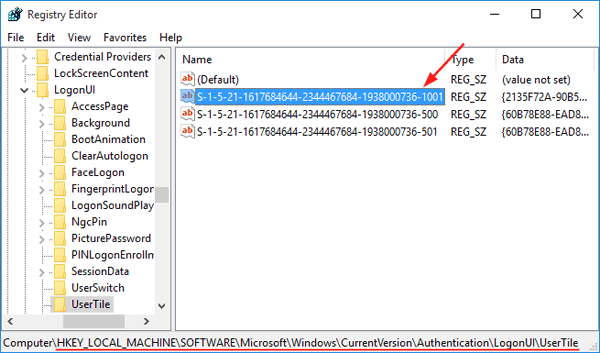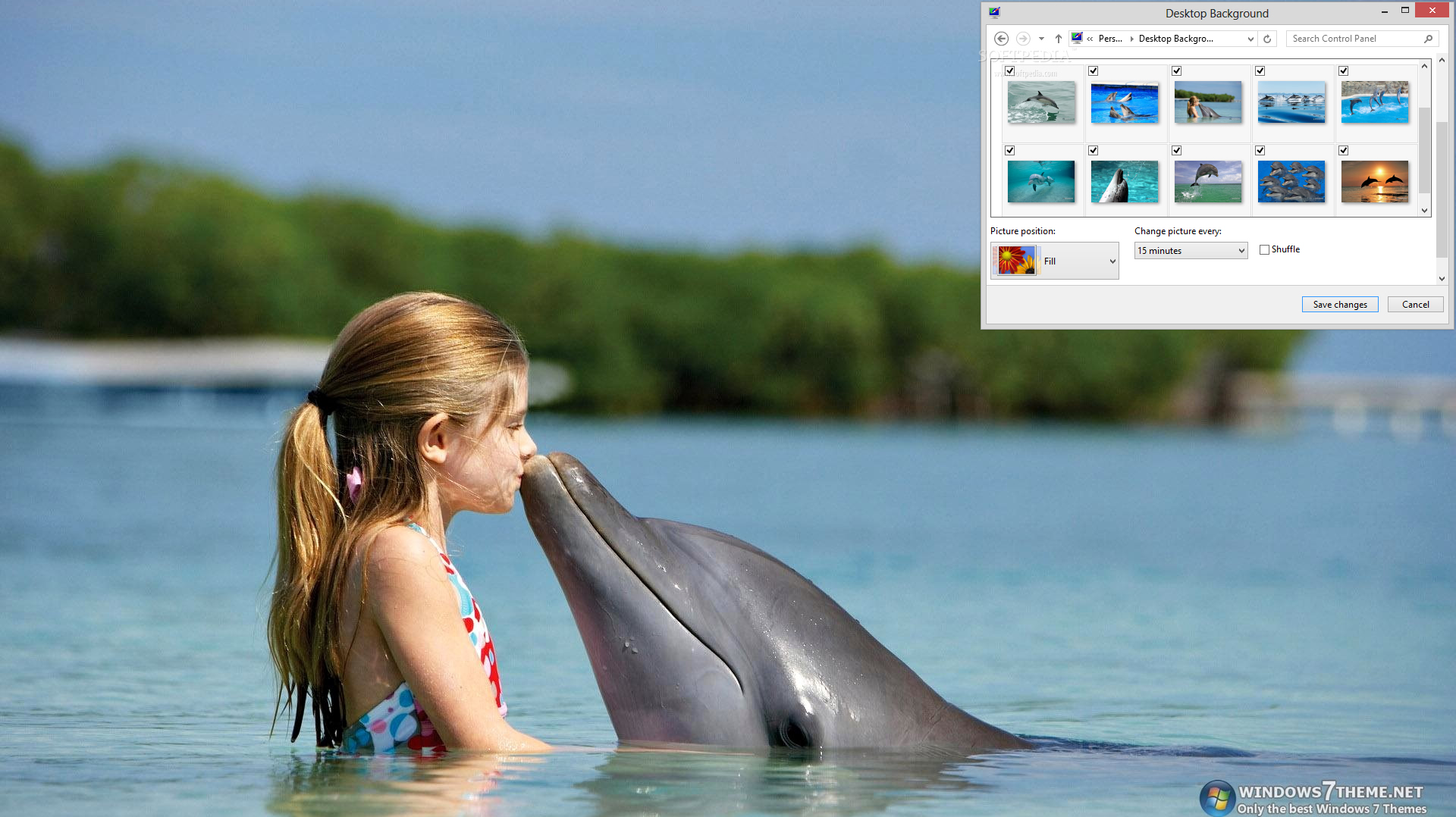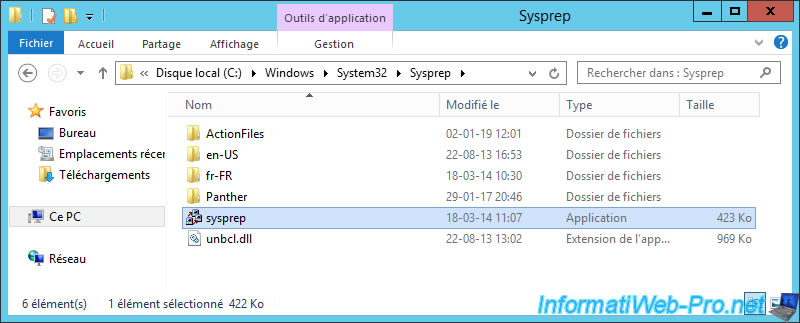You need to use sysprep, which does far more then just change a machine's SID. Note that Sysprep resets other machine-specific state that, if duplicated, can cause problems for certain applications like Windows Server Update Services (WSUS), so MIcrosoft's support policy will still require cloned systems to be made unique with Sysprep. NewSID is a program we developed to change a computer's SID. It first generates a random SID for the computer, and proceeds to update instances of the existing computer SID it finds in the Registry and in file security descriptors, replacing occurrences with the new SID. NewSID requires administrative privileges to run.
-->By Mark Russinovich
Published: November 1, 2006
Note: NewSID has been retired and is no longer available fordownload. Please see Mark Russinovich’s blog post: NewSID Retirementand the Machine SID DuplicationMyth
IMPORTANT
Regarding SIDs, Microsoft does not support images that are preparedusing NewSID, we only support images that are prepared using SysPrep.Microsoft has not tested NewSID for all deployment cloning options.
For more information on Microsoft's official policy, please see thefollowing Knowledge Base article:
Introduction
Many organizations use disk image cloning to perform mass rollouts ofWindows. This technique involves copying the disks of a fully installedand configured Windows computer onto the disk drives of other computers.These other computers effectively appear to have been through the sameinstall process, and are immediately available for use.
While this method saves hours of work and hassle over other rolloutapproaches, it has the major problem that every cloned system has anidentical Computer Security Identifier (SID). This fact compromisessecurity in Workgroup environments, and removable media security canalso be compromised in networks with multiple identical computer SIDs.
Pokemon extreme randomizer rom download nds. Demand from the Windows community has lead several companies to developprograms that can change a computer's SID after a system has beencloned. However, Symantec's SID Changer andSymantec's Ghost Walker areonly sold as part of each company's high-end product. Further, they bothrun from a DOS command prompt (Altiris' changer is similar toNewSID).
NewSID is a program we developed that changes a computer's SID. It isfree and is a Win32 program, meaning that it can easily be run onsystems that have been previously cloned.
Please read this entire article before you use this program.
Version Information:
- Version 4.0 introduces support for Windows XP and .NET Server, awizard-style interface, allows you to specify the SID that you wantapplied, Registry compaction and also the option to rename acomputer (which results in a change of both NetBIOS and DNS names).
- Version 3.02 corrects a bug where NewSid would not correctly copydefault values with invalid value types when renaming a key with anold SID to a new SID. NT actually makes use of such invalid valuesat certain times in the SAM. The symptom of this bug was errormessages reporting access denied when account information wasupdated by an authorized user.
- Version 3.01 adds a work-around for an inaccessible Registry keythat is created by Microsoft Transaction Server. Without thework-around NewSID would quit prematurely.
- Version 3.0 introduces a SID-sync feature that directs NewSID toobtain a SID to apply from another computer.
- Version 2.0 has an automated-mode option, and let's you change thecomputer name as well.
- Version 1.2 fixes a bug in that was introduced in 1.1 where somefile system security descriptors were not updated.
- Version 1.1 corrects a relatively minor bug that affected onlycertain installations. It also has been updated to change SIDsassociated with the permission settings of file and printer shares.
Cloning and Alternate Rollout Methods
One of the most popular ways of performing mass Windows rollouts(typically hundreds of computers) in corporate environments is based onthe technique of disk cloning. A system administrator installs the baseoperating system and add-on software used in the company on a templatecomputer. After configuring the machine for operation in the companynetwork, automated disk or system duplication tools (such asSymantec'sGhost,PowerQuest'sImage Drive, andAltiris'RapiDeploy) are used to copy thetemplate computer's drives onto tens or hundreds of computers. Theseclones are then given final tweaks, such as the assignment of uniquenames, and then used by company employees.
Another popular way of rolling out is by using the Microsoft sysdiffutility (part of the Windows Resource Kit). This tool requires that thesystem administrator perform a full install (usually a scriptedunattended installation) on each computer, and then sysdiff automatesthe application of add-on software install images.
Because the installation is skipped, and because disk sector copying ismore efficient than file copying, a cloned-based rollout can save dozensof hours over a comparable sysdiff install. In addition, the systemadministrator does not have to learn how to use unattended install orsysdiff, or create and debug install scripts. This alone saves hoursof work.
The SID Duplication Problem
The problem with cloning is that it is only supported by Microsoft in avery limited sense. Microsoft has stated that cloning systems is onlysupported if it is done before the GUI portion of Windows Setup has beenreached. When the install reaches this point the computer is assigned aname and a unique computer SID. If a system is cloned after this stepthe cloned machines will all have identical computer SIDs. Note thatjust changing the computer name or adding the computer to a differentdomain does not change the computer SID. Changing the name or domainonly changes the domain SID if the computer was previously associatedwith a domain.
To understand the problem that cloning can cause, it is first necessaryto understand how individual local accounts on a computer are assignedSIDs. The SIDs of local accounts consist of the computer's SID and anappended RID (Relative Identifier). The RID starts at a fixed value, andis increased by one for each account created. This means that the secondaccount on one computer, for example, will be given the same RID as thesecond account on a clone. The result is that both accounts have thesame SID.
Duplicate SIDs aren't an issue in a Domain-based environment sincedomain accounts have SID's based on the Domain SID. But, according toMicrosoft Knowledge Base article Q162001, 'Do Not Disk DuplicateInstalled Versions of Windows NT', in a Workgroup environment securityis based on local account SIDs. Thus, if two computers have users withthe same SID, the Workgroup will not be able to distinguish between theusers. All resources, including files and Registry keys, that one userhas access to, the other will as well.
Another instance where duplicate SIDs can cause problems is where thereis removable media formatted with NTFS, and local account securityattributes are applied to files and directories. If such a media ismoved to a different computer that has the same SID, then local accountsthat otherwise would not be able to access the files might be able to iftheir account IDs happened to match those in the security attributes.This is not be possible if computers have different SIDs.
An article Mark has written, entitled 'NT Rollout Options,' waspublished in the June issue of Windows NT Magazine. It discusses theduplicate SID issue in more detail, and presents Microsoft's officialstance on cloning. To see if you have a duplicate SID issue on yournetwork, usePsGetSidto display machine SIDs.
NewSID

NewSID is a program we developed to change a computer's SID. It firstgenerates a random SID for the computer, and proceeds to updateinstances of the existing computer SID it finds in the Registry and infile security descriptors, replacing occurrences with the new SID.NewSID requires administrative privileges to run. It has twofunctions: changing the SID, and changing the computer name.

To use NewSID's auto-run option, specify '/a' on the command line. Youcan also direct it to automatically change the computer's name byincluding the new name after the '/a' switch. For example:
newsid /a [newname]
Would have NewSID run without prompting, change the computer name to'newname' and have it reboot the computer if everything goes okay.
Note: If the system on which you wish to run NewSID is runningIISAdmin you must stop the IISAdmin service before running NewSID. Usethis command to stop the IISAdmin service: net stop iisadmin /y
NewSID's SID-synchronizing feature that allows you to specify that,instead of randomly generating one, the new SID should be obtained froma different computer. This functionality makes it possible to move aBackup Domain Controller (BDC) to a new Domain, since a BDC'srelationship to a Domain is identified by it having the same computerSID as the other Domain Controllers (DCs). Simply choose the'Synchronize SID' button and enter the target computer's name. You musthave permissions to change the security settings of the targetcomputer's Registry keys, which typically means that you must be loggedin as a domain administrator to use this feature.
Note that when you run NewSID that the size of the Registry will grow,so make sure that the maximum Registry size will accommodate growth. Wehave found that this growth has no perceptible impact on systemperformance. The reason the Registry grows is that it becomes fragmentedas temporary security settings are applied by NewSID. When thesettings are removed the Registry is not compacted.
Important: Note that while we have thoroughly tested NewSID, youmust use it at your own risk. As with any software that changes file andRegistry settings, it is highly recommended that you completely back-upyour computer before running NewSID.
Moving a BDC
Here are the steps you should follow when you want to move a BDC fromone domain to another:
- Boot up the BDC you want to move and log in. Use NewSID tosynchronize the SID of the BDC with the PDC of the domain to whichyou wish to move the BDC.
- Reboot the system for which you changed the SID (the BDC). Since thedomain the BDC is now associated with already has an active PDC, itwill boot as a BDC in its new domain.
- The BDC will show up as a workstation in Server Manager, so use the'Add to Domain' button to add the BDC to its new domain. Be sure tospecify the BDC radio button when adding.
How it Works

NewSID starts by reading the existing computer SID. A computer's SIDis stored in the Registry's SECURITY hive underSECURITYSAMDomainsAccount. This key has a value named F and avalue named V. The V value is a binary value that has the computer SIDembedded within it at the end of its data. NewSID ensures that thisSID is in a standard format (3 32-bit subauthorities preceded by three32-bit authority fields).
Next, NewSID generates a new random SID for the computer. NewSID'sgeneration takes great pains to create a truly random 96-bit value,which replaces the 96-bits of the 3 subauthority values that make up acomputer SID.
Three phases to the computer SID replacement follow. In the first phase,the SECURITY and SAM Registry hives are scanned for occurrencesof the old computer SID in key values, as well as the names of the keys.When the SID is found in a value it is replaced with the new computerSID, and when the SID is found in a name, the key and its subkeys arecopied to a new subkey that has the same name except with the new SIDreplacing the old.
The final two phases involve updating security descriptors. Registrykeys and NTFS files have security associated with them. Securitydescriptors consist of an entry that identifies which account owns theresource, which group is the primary group owner, an optional list ofentries that specify actions permitted by users or groups (known as theDiscretionary Access Control List - DACL), and an optional list ofentries that specify which actions performed by certain users or groupswill generate entries in the system Event Log (System Access ControlList - SACL). A user or a group is identified in these securitydescriptors with their SIDs, and as I stated earlier, local useraccounts (other than the built-in accounts such as Administrator, Guest,and so on) have their SIDs made up of the computer SID plus a RID.
The first part of security descriptor updates occurs on all NTFS filesystem files on the computer. Every security descriptor is scanned foroccurrences of the computer SID. When NewSID finds one, it replaces itwith the new computer SID.
The second part of security descriptor updates is performed on theRegistry. First, NewSID must make sure that it scans all hives, notjust those that are loaded. Every user account has a Registry hive thatis loaded as HKEY_CURRENT_USER when the user is logged in, butremains on disk in the user's profile directory when they are not.NewSID identifies the locations of all user hive locations byenumerating the HKEY_LOCAL_MACHINESoftwareMicrosoftWindowsNTCurrentVersionProfileList key, which points at the directoriesin which they are stored. It then loads them into the Registry usingRegLoadKey under HKEY_LOCAL_MACHINE and scans the entire Registry,examining each security descriptor in search of the old computer SID.Updates are performed the same as for files, and when its done NewSIDunloads the user hives it loaded. As a final step NewSID scans theHKEY_USERS key, which contains the hive of the currently logged-inuser as well as the .Default hive. This is necessary because a hivecan't be loaded twice, so the logged-in user hive won't be loaded intoHKEY_LOCAL_MACHINE when NewSID is loading other user hives.
Finally, NewSID must update the ProfileList subkeys to refer tothe new account SIDs. This step is necessary to have Windows NTcorrectly associate profiles with the user accounts after the accountSIDs are changed to reflect the new computer SID.
NewSID ensures that it can access and modify every file and Registrykey in the system by giving itself the following privileges: System,Backup, Restore and Take Ownership.
While most Windows 10 computers are configured to be used with either Microsoft accounts or local accounts, there are IT pros and administrators who prefer to stick with guest accounts for certain devices, especially because this substantially limits rights on these computers.
In other words, regardless of the changes they make, these PCs wouldn’t suffer from any stability or reliability issues, because any critical modifications are blocked.
Guest accounts, however, come with a series of controls on Windows 10, and one of the changes that most IT pros typically do is change their names.
While this would obviously make them more intuitive and easier to use for certain employees, picking a different name could also mean that guest accounts are harder to guess by those who aren’t familiar with the policies using within a network.
Renaming guest accounts isn’t at all a difficult thing and there are several ways to do that, so you can choose any of them as long as you are logged in with an administrator account.
Command Prompt
Neo geo rom collection by ghostware. Launch an elevated Command Prompt (a Command Prompt window with administrator privileges – type cmd.exe in the Start menu > right-click the result > Run as administrator) and type the following command:
wmic useraccount where name=’OldName’ rename ‘NewName’Obviously, you need to replace the OldName and the NewName tags with the names that you want to use for the guest account. If you are using the default settings, the command should look like this:
tags with the names that you want to use for the guest account. If you are using the default settings, the command should look like this:wmic useraccount where name=’Guest’ rename ‘NewName’Computer Management
Additionally, changing the name of the guest account is possible from the Computer Management screen. In this case, you only have to right-click the Windows 10 Start menu > Computer Management, or click the Start menu/press Windows key + R and type compmgmt.msc.
Navigate to the following location in the Computer Management screen:
System Tools > Local Users and Groups > UsersExpand the list of users and you should see the Guest account in the list. Just right-click this account > Rename and then write down the name that you want to use.Group Policy Editor
IT administrators might turn to this method because it involves changing a default policy that was created in the Local Group Policy Editor.
This time, you need to launch the Group Policy Editor by typing its name in the Start menu. You can also type gpedit.msc in the Start menu or in Windows key + R. Then, navigate to the following path:
Computer Configuration > Windows Settings > Security Settings > Local Policies > Security Options
Changer Le Sid Windows 10
The policy that you are looking for is placed on the right side of the screen, and it’s called:Accounts: Rename guest accountSimply double-click this policy to provide a new name for the guest account. The policy explains the following:Uad universal audio plugin bundles cracked. “This security setting determines whether a different account name is associated with the security identifier (SID) for the account 'Guest.' Renaming the well-known Guest account makes it slightly more difficult for unauthorized persons to guess this user name and password combination.”
Sid Changer Windows 10 64-bit
In all cases, rebooting the system is required to save the changes. Also, it’s recommended that you create a system backup before making the modifications, just in case you want to return to the default settings at a later time.
Technically, that should work normally by simply following the same steps and then returning to the Guest account name, but if you’re afraid that something could go wrong, creating a backup is the best way to go.
Free Sid Changer Windows 10
All these methods work in Windows 10 regardless of the version that you are running, including the recently-released October 2018 Update (version 1809).